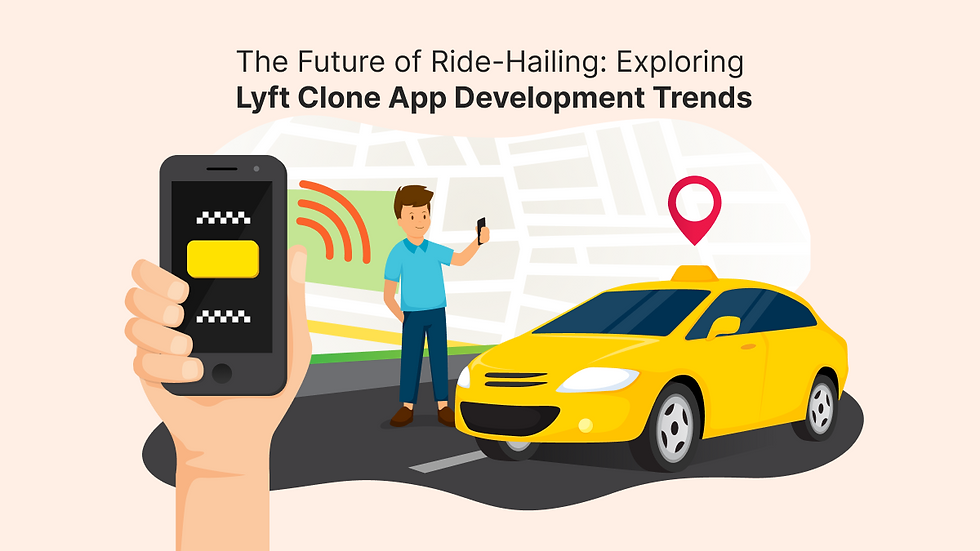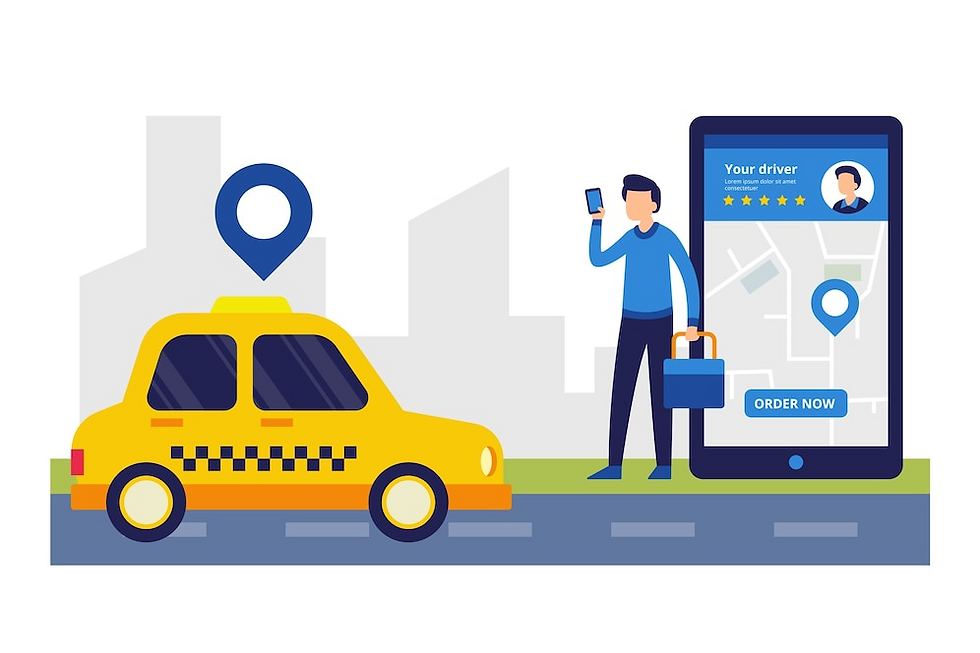The Future of Ride-Hailing: Exploring Lyft Clone App Development Trends
- cloneapp

- Aug 22
- 5 min read

Ride-hailing apps have become a big part of our daily lives. People today prefer convenience, and apps like Lyft and Uber have made traveling easier, faster, and more affordable. Instead of waiting for traditional taxis, users can book a ride with just a few taps on their smartphones. This growing demand has created opportunities for entrepreneurs to invest in clone app solutions. Among these, the Lyft clone app has gained attention because it provides a ready-to-use platform that can be customized for different business needs. In this blog, we will explore the future of ride-hailing and the development trends shaping Lyft clone apps.
Understanding Lyft Clone App Development
A Lyft clone app is a pre-built solution designed to work like Lyft but with room for customization. It includes rider and driver apps, an admin panel, and a set of features for booking, payments, and tracking rides. The main advantage of choosing a clone app is that it saves time and cost, while still allowing businesses to add unique features that make them stand out.
The Changing Landscape of Ride-Hailing
Ride-hailing is no longer limited to booking a simple car ride. The industry is growing and evolving quickly. From shared rides and luxury services to eco-friendly options like electric vehicles, customer expectations are changing. At the same time, technology is playing a major role in shaping the industry. A Lyft clone app must be built to handle these shifts and offer services that match the future needs of riders and drivers.
Key Trends in Lyft Clone App Development
Electric and Green Vehicles
Sustainability is becoming important for both businesses and customers. More people prefer eco-friendly rides, and governments are supporting electric vehicle adoption. Future Lyft clone apps should integrate features that allow users to book electric or hybrid cars, helping businesses reduce their carbon footprint and appeal to eco-conscious customers.
Autonomous Vehicles
Self-driving technology is one of the biggest trends in transportation. While it is still in the testing stage, ride-hailing companies are preparing for it. A Lyft clone app can be designed to support autonomous vehicles in the future, making businesses ready for the next big shift in mobility.
Artificial Intelligence and Machine Learning
AI is transforming ride-hailing services. From predicting demand in certain areas to matching riders with the nearest drivers, AI makes the system more efficient. Machine learning also helps in analyzing user behavior and offering personalized ride suggestions. Integrating these technologies into a Lyft clone app can improve customer experience and boost business growth.
Multi-Service Platforms
Ride-hailing is no longer limited to passenger transport. Many apps now combine multiple services like food delivery, parcel delivery, and even grocery delivery. By integrating such features, a Lyft clone app can become a one-stop solution that attracts more users and generates higher revenue.
Subscription and Loyalty Programs
Users today want more than just a ride. They expect benefits like discounts, loyalty points, or monthly subscription plans. Clone apps can include membership models where customers pay a flat fee for unlimited or discounted rides. This creates customer loyalty and a steady revenue stream for the business.
Safety and Security Features
Safety remains a top priority in ride-hailing. Advanced features like real-time ride tracking, emergency SOS buttons, driver background checks, and facial recognition can be added to a Lyft clone app. These measures build trust among users and encourage more people to use the platform.
Contactless Payments and Digital Wallets
The rise of digital payments has made cashless transactions the new standard. A Lyft clone app should support multiple payment options, including cards, UPI, wallets, and even cryptocurrency. Contactless payments not only make rides more convenient but also safer in today’s world.
Data-Driven Insights
Big data analytics is helping ride-hailing businesses make smarter decisions. By analyzing travel patterns, peak hours, and customer behavior, businesses can optimize pricing, improve services, and expand in the right areas. Adding data-driven tools to a Lyft clone app allows entrepreneurs to stay ahead in the competition.
Integration with Smart Cities
As cities become smarter with IoT and digital systems, ride-hailing apps can integrate with traffic management and public transport. This helps reduce congestion and improve overall efficiency. A Lyft clone app with smart city integration can provide seamless travel experiences.
The Future Opportunities of Lyft Clone Apps
Expansion to New Markets
With more people moving to urban areas, the demand for ride-hailing will continue to grow worldwide. A well-developed Lyft clone app can help businesses tap into new regions, offering local languages, currencies, and features.
Partnerships with Businesses
Ride-hailing services can partner with corporate companies to provide transportation for employees. They can also collaborate with hotels, airports, and event organizers to offer customized ride options. A Lyft clone app can include features for business accounts and partnerships.
Focus on User Experience
The future of ride-hailing lies in offering smooth, fast, and enjoyable user experiences. From simple app navigation to real-time updates and responsive support, a Lyft clone app should be built with customer satisfaction as the priority.
Global Mobility Solutions
Ride-hailing is moving toward becoming part of a bigger mobility ecosystem. Features like car rentals, bike-sharing, and public transport integration are expected in future apps. A Lyft clone app can grow into a global mobility solution if developed with scalability in mind.
Challenges in the Ride-Hailing Future
While the opportunities are exciting, challenges also exist. Regulations, competition, and driver shortages can affect businesses. Rising fuel costs and changing government policies on ride-hailing services are other hurdles. The key to overcoming these challenges is to adapt quickly and invest in innovative features that keep customers engaged.
Conclusion
The future of ride-hailing is full of possibilities, and technology will continue to push the industry forward. A Lyft clone app gives entrepreneurs a strong foundation to enter the market and adapt to future trends. By focusing on innovations like electric vehicles, AI, multi-service platforms, and advanced safety features, businesses can stand out in the competitive market. With the right planning and the support of a skilled clone app development company, entrepreneurs can build a platform that is not only successful today but also ready for the future.

FAQs
What is a Lyft clone app?
It is a ready-made ride-hailing app solution that works like Lyft but can be customized with unique features and branding.
Why should businesses invest in a Lyft clone app?
It saves time and development cost while offering a complete platform for launching a ride-hailing service.
What future trends should be included in Lyft clone apps?
Some key trends include electric vehicles, AI-powered features, subscription models, multi-service integration, and smart city connectivity.
Can a Lyft clone app support multiple services?
Yes, modern clone apps can include ride-hailing, food delivery, parcel delivery, and more to attract a wider customer base.
How does technology improve a Lyft clone app?
Technology ensures accurate ride matching, secure payments, data-driven insights, and future-ready features like autonomous vehicles and IoT integration.




Comments